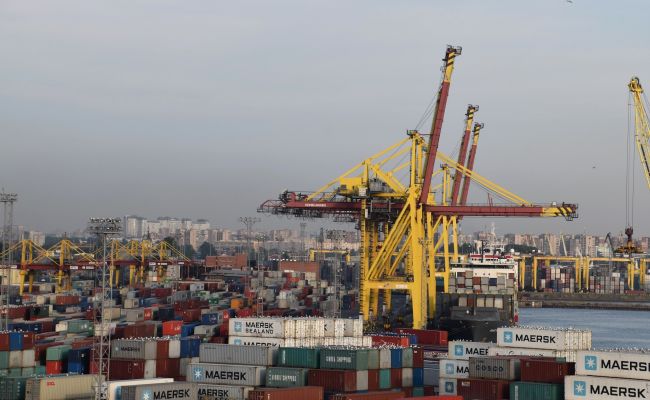Small country, extra large logistics network
 The situation has not changed
The situation has not changed
The Belarusian government has determined that the current state of affairs with the West will persist for an extended period. Consequently, they are continuing to prioritize the development of the transportation and logistics infrastructure in the East. In the initial eight-month period of this year, Belarus has seen a 10 percent increase in the volume of cargo transshipped through Russian ports. However, this did not have a positive impact on the ratio of exports to imports.

In a recent statement, Aliaksei Liakhnovich, Belarusian Minister of Transport and Communications, revealed that the “export volume of Belarusian products through the Russian port infrastructure has reached 110 percent of the same period last year.”
According to the official, a new transport and logistic framework for transporting Belarusian products has now been created. This became possible thanks to the cooperation with partner countries, first of all with Russia. In addition to the Russian Federation, Belarus partners with China, Kazakhstan, Iran, Azerbaijan, Turkmenistan and Uzbekistan. Concerning railway transportation, Liakhnovich noted that Belarusian products are exported to more than 90 countries by rail. He mentioned several countries that Belarusians hardly hear about: Mali, Guinea-Bissau, Benin, and others.
The Minister noted that the necessary conditions are being created to increase the volume of containerized export shipments of domestic products to the Chinese market. Interestingly, in the first seven months of 2024, Belarusian exports to China decreased by 39.8% compared to the same period last year. This is based on China’s customs data.
Before the imposition of sanctions, Belarusian exports were routed through the Baltic states and Ukraine, as this represented the most efficient logistical solution. Subsequently, Minsk identified an alternative solution, including the utilisation of Russian sea and river ports. At present, 14 Russian ports are used for transshipment of Belarusian cargoes.
In late June, Aliaksandr Lukashenka announced the commencement of port construction projects in the Leningrad and Murmansk Regions, which are being undertaken by the Belarusian government. Furthermore, the Belarusian government anticipates the construction of a new deep-water port in the Far East, with the involvement of Russia and China. This port is set to become a component of the inaugural International Advanced Development Territory in Primorye.
Minsk is also pursuing the development of logistics infrastructure based on the North-South international transport corridor (ITC). In July 2024, the governments of Kazakhstan, Iran, and Turkmenistan signed a roadmap outlining a plan for the coordinated development of this route. In April this year Belarus joined the Russia-Kazakhstan-Uzbekistan-Afghanistan-Pakistan ITC. The head of the Ministry of Transport has indicated that Belarus is interested in further developing the initiative to create a common transport space within the CIS, EAEU, and SCO.
Nevertheless, Minsk’s ambitious logistics plans are hindered by the regulator’s own trade policy. The latest figures from the National Statistics Committee show that import growth is accelerating, outpacing export growth. This situation calls for a re-evaluation of the optimistic indicators in the first half of the year. From January to July 2024, Belarus’s foreign trade turnover of goods reached $48,991.5 mln, with exports accounting for $23,355.4 mln and imports for $25,636.1 mln. As a result, the negative balance for the first seven months of this year reached $2.281 billion. One month prior, this value reached $1.745 billion, indicating a decline of $536 million in the balance on goods over a month.
Subscribe to our newsletter




Situation in Belarus
Constitutional referendum: main consequences


 Video
Video
How to count the political prisoners: are the new criteria needed?


 Video
Video
Paternalism In Decline, Belarusian Euroscepticism, And The Influence Of Russia


 Video
Video












